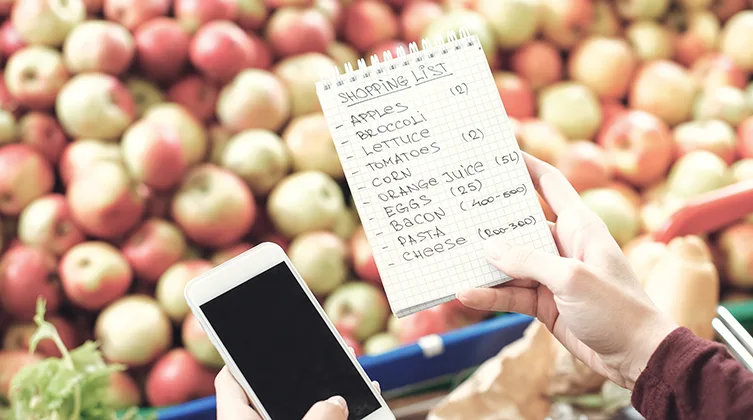For many of us, food contributes a huge proportion of the weekly outgoings. When budgets are tight, it can sometimes seem contrary to make healthy choices. For a stalk of broccoli can cost more than a packet of Tim Tams. Yet the potential long-term consequences of a nutrient-deplete diet are significantly more expensive. Diet is the greatest modifiable risk factor for a myriad of chronic diseases and years lost due to disability (a statistical phrase). Diet also affects how we feel in the here and now. We know that diet influences our mood, mindset, waist-line and of course, energy levels. Therefore influencing our productivity and problem solving abilities.
Here I suggest 14 tips that may assist you to reduce the grocery bill, whilst at the same time optimizing health and nutrition.
1. Shop around. The premium placed on produce can vary dramatically from store to store, and farmer to farmer. Shop around for the best prices.
2. Buy the whole animal. Rather than just buying the chicken breast or drumsticks, what if you purchased the whole chicken, portioned it up, froze that which you didn’t require immediately? This is a more cost-effective and less wasteful way to consume meat. It also gives you access to wonderfully nutritious cuts that you wouldn’t normally buy. In addition, you can utilize the bones and off-cuts to create nutrient-dense broths.
3. Go meat-free. Meat quickly adds to the grocery bill. Consider embracing meat free meals. Meatless Monday is a great place to start. Swap meat for legumes, beans, pulses and even tofu. If you purchase beans and legumes in bags, they are substantially cheaper than cans.
4. Buy in bulk. If you have space, buying in bulk can help save money.
5. Have leftover or “scrap” nights. It’s okay to have leftovers for dinner. Encourage the whole household to embrace these evenings. I love nourish or Buddha bowls (just google them for inspiration). Throw together whatever you can find. Bulk up the meal with some quinoa, rice, or starchy vegetables, and add a sprinkle of nuts, seeds and/or herbs.
6. Grow some of your own. Herbs are a great place to start.
8. Consume less. Only purchase products you actually need. Write a shopping list and stick to eat. Try to avoid the lure of “retail therapy” or “emotional shopping.” I speak from the heart here.
9. Invest in a water filter, and bottle your own. Opposed to purchasing plastic (or glassed) bottled water.
10. Adjust recipes. Recipes can easily be modified to utilize cheaper cuts of meats or those which are on sale. Or bulk up recipes with cheaper ingredients such as legumes, pulses and potatoes, and use fruits and vegetables that are in season (they tend to be cheaper).
11. Get a compost bin, worm farm or bokashi bucket for your kitchen waste. Use the waste for your garden and to grow your own produce.
12. Use stale or discarded vegetables. Floppy celery, broccoli stalks or tired carrots? Use these to make stock. Freeze the pieces until you are ready to make up a batch of vegetable stock. Add the veggie stock to a variety of dishes from soups to casseroles, and the cooking water to make quinoa or rice. The veggie stock will enhance the nutritional value of your meals.
13. Super what? Unfortunately many of the so-called superfoods tend to be sold at a premium. It is not necessary to consume expensive superfoods to have a healthy, nutrient-dense diet. Something to be mindful of when shopping around and the price tags feel a bit too hefty.
14. Get the whole household involved. Make everyone in the household aware of your mission. Get them involved and enthusiastic about growing your own, heading to the farmer’s market and/or frugally emptying the fridge each week with creative meal ideas.
Reducing the grocery bill does not mean you have to compromise on nutrition. Instead shop around, investigate local sources, make do with what is available, eat less meat or choose cheaper cuts. Embrace frugality.





